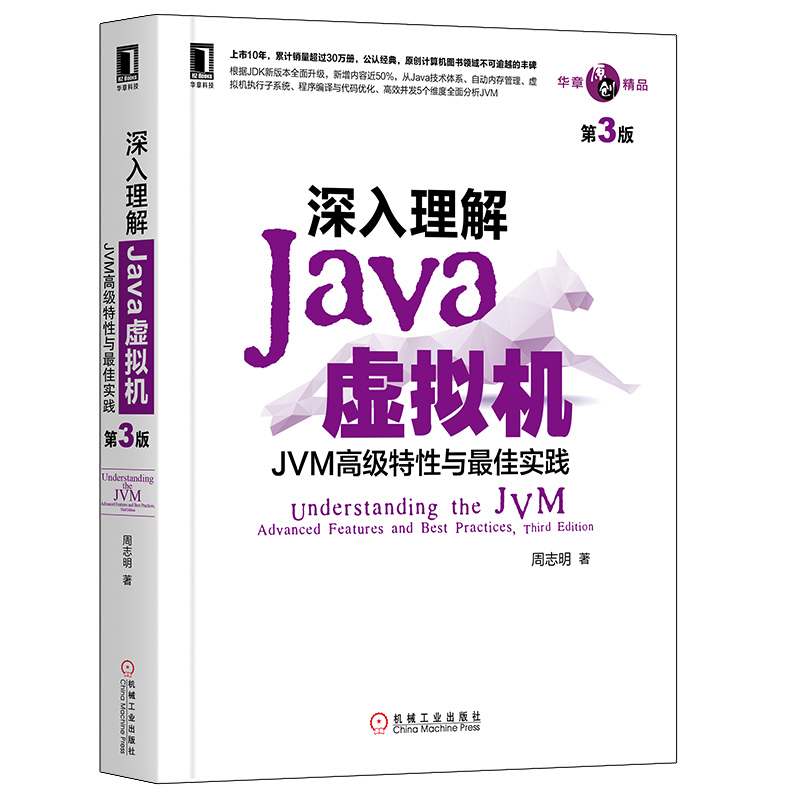本文整理自网络,侵删。
Spring 编程式事务管理
编程式事务管理方法允许你在对你的源代码编程的帮助下管理事务。这给了你极大地灵活性,但是它很难维护。
在我们开始之前,至少要有两个数据库表,在事务的帮助下我们可以执行多种 CRUD 操作。以 Student 表为例,用下述 DDL 可以在 MySQL TEST 数据库中创建该表:
CREATE TABLE Student(
ID INT NOT NULL AUTO_INCREMENT,
NAME VARCHAR(20) NOT NULL,
AGE INT NOT NULL,
PRIMARY KEY (ID)
);第二个表是 Marks,用来存储基于年份的学生的标记。这里 SID 是 Student 表的外键。
CREATE TABLE Marks(
SID INT NOT NULL,
MARKS INT NOT NULL,
YEAR INT NOT NULL
);让我们直接使用 PlatformTransactionManager 来实现编程式方法从而实现事务。要开始一个新事务,你需要有一个带有适当的 transaction 属性的 TransactionDefinition 的实例。这个例子中,我们使用默认的 transaction 属性简单的创建了 DefaultTransactionDefinition 的一个实例。
当 TransactionDefinition 创建后,你可以通过调用 getTransaction() 方法来开始你的事务,该方法会返回 TransactionStatus 的一个实例。 TransactionStatus 对象帮助追踪当前的事务状态,并且最终,如果一切运行顺利,你可以使用 PlatformTransactionManager 的 commit() 方法来提交这个事务,否则的话,你可以使用 rollback() 方法来回滚整个操作。
现在让我们编写我们的 Spring JDBC 应用程序,它能够在 Student 和 Mark 表中实现简单的操作。让我们适当的使用 Eclipse IDE,并按照如下所示的步骤来创建一个 Spring 应用程序:
| 步骤 | 描述 |
|---|---|
| 1 | 创建一个名为 SpringExample 的项目,并在创建的项目中的 src 文件夹下创建包 com.tutorialspoint 。 |
| 2 | 使用 Add External JARs 选项添加必需的 Spring 库,解释见 Spring Hello World Example chapter. |
| 3 | 在项目中添加 Spring JDBC 指定的最新的库 mysql-connector-java.jar,org.springframework.jdbc.jar 和 org.springframework.transaction.jar。如果你还没有这些库,你可以下载它们。 |
| 4 | 创建 DAO 接口 StudentDAO 并列出所有需要的方法。尽管它不是必需的并且你可以直接编写 StudentJDBCTemplate 类,但是作为一个好的实践,我们还是做吧。 |
| 5 | 在 com.tutorialspoint 包下创建其他必需的 Java 类 StudentMarks,StudentMarksMapper,StudentJDBCTemplate 和 MainApp。如果需要的话,你可以创建其他的 POJO 类。 |
| 6 | 确保你已经在 TEST 数据库中创建了 Student 和 Marks 表。还要确保你的 MySQL 服务器运行正常并且你使用给出的用户名和密码可以读/写访问数据库。 |
| 7 | 在 src 文件夹下创建 Beans 配置文件 Beans.xml 。 |
| 8 | 最后一步是创建所有 Java 文件和 Bean 配置文件的内容并按照如下所示的方法运行应用程序。 |
下面是数据访问对象接口文件 StudentDAO.java 的内容:
package com.tutorialspoint;
import java.util.List;
import javax.sql.DataSource;
public interface StudentDAO {
/**
* This is the method to be used to initialize
* database resources ie. connection.
*/
public void setDataSource(DataSource ds);
/**
* This is the method to be used to create
* a record in the Student and Marks tables.
*/
public void create(String name, Integer age, Integer marks, Integer year);
/**
* This is the method to be used to list down
* all the records from the Student and Marks tables.
*/
public List<StudentMarks> listStudents();
}下面是 StudentMarks.java 文件的内容:
package com.tutorialspoint;
public class StudentMarks {
private Integer age;
private String name;
private Integer id;
private Integer marks;
private Integer year;
private Integer sid;
public void setAge(Integer age) {
this.age = age;
}
public Integer getAge() {
return age;
}
public void setName(String name) {
this.name = name;
}
public String getName() {
return name;
}
public void setId(Integer id) {
this.id = id;
}
public Integer getId() {
return id;
}
public void setMarks(Integer marks) {
this.marks = marks;
}
public Integer getMarks() {
return marks;
}
public void setYear(Integer year) {
this.year = year;
}
public Integer getYear() {
return year;
}
public void setSid(Integer sid) {
this.sid = sid;
}
public Integer getSid() {
return sid;
}
}以下是 StudentMarksMapper.java 文件的内容:
package com.tutorialspoint;
import java.sql.ResultSet;
import java.sql.SQLException;
import org.springframework.jdbc.core.RowMapper;
public class StudentMarksMapper implements RowMapper<StudentMarks> {
public StudentMarks mapRow(ResultSet rs, int rowNum) throws SQLException {
StudentMarks studentMarks = new StudentMarks();
studentMarks.setId(rs.getInt("id"));
studentMarks.setName(rs.getString("name"));
studentMarks.setAge(rs.getInt("age"));
studentMarks.setSid(rs.getInt("sid"));
studentMarks.setMarks(rs.getInt("marks"));
studentMarks.setYear(rs.getInt("year"));
return studentMarks;
}
}下面是定义的 DAO 接口 StudentDAO 实现类文件 StudentJDBCTemplate.java:
package com.tutorialspoint;
import java.util.List;
import javax.sql.DataSource;
import org.springframework.dao.DataAccessException;
import org.springframework.jdbc.core.JdbcTemplate;
import org.springframework.transaction.PlatformTransactionManager;
import org.springframework.transaction.TransactionDefinition;
import org.springframework.transaction.TransactionStatus;
import org.springframework.transaction.support.DefaultTransactionDefinition;
public class StudentJDBCTemplate implements StudentDAO {
private DataSource dataSource;
private JdbcTemplate jdbcTemplateObject;
private PlatformTransactionManager transactionManager;
public void setDataSource(DataSource dataSource) {
this.dataSource = dataSource;
this.jdbcTemplateObject = new JdbcTemplate(dataSource);
}
public void setTransactionManager(
PlatformTransactionManager transactionManager) {
this.transactionManager = transactionManager;
}
public void create(String name, Integer age, Integer marks, Integer year){
TransactionDefinition def = new DefaultTransactionDefinition();
TransactionStatus status = transactionManager.getTransaction(def);
try {
String SQL1 = "insert into Student (name, age) values (?, ?)";
jdbcTemplateObject.update( SQL1, name, age);
// Get the latest student id to be used in Marks table
String SQL2 = "select max(id) from Student";
int sid = jdbcTemplateObject.queryForInt( SQL2,null,Integer.class );
String SQL3 = "insert into Marks(sid, marks, year) " +
"values (?, ?, ?)";
jdbcTemplateObject.update( SQL3, sid, marks, year);
System.out.println("Created Name = " + name + ", Age = " + age);
transactionManager.commit(status);
} catch (DataAccessException e) {
System.out.println("Error in creating record, rolling back");
transactionManager.rollback(status);
throw e;
}
return;
}
public List<StudentMarks> listStudents() {
String SQL = "select * from Student, Marks where Student.id=Marks.sid";
List <StudentMarks> studentMarks = jdbcTemplateObject.query(SQL,
new StudentMarksMapper());
return studentMarks;
}
}现在让我们改变主应用程序文件 MainApp.java,如下所示:
package com.tutorialspoint;
import java.util.List;
import org.springframework.context.ApplicationContext;
import org.springframework.context.support.ClassPathXmlApplicationContext;
import com.tutorialspoint.StudentJDBCTemplate;
public class MainApp {
public static void main(String[] args) {
ApplicationContext context =
new ClassPathXmlApplicationContext("Beans.xml");
StudentJDBCTemplate studentJDBCTemplate =
(StudentJDBCTemplate)context.getBean("studentJDBCTemplate");
System.out.println("------Records creation--------" );
studentJDBCTemplate.create("Zara", 11, 99, 2010);
studentJDBCTemplate.create("Nuha", 20, 97, 2010);
studentJDBCTemplate.create("Ayan", 25, 100, 2011);
System.out.println("------Listing all the records--------" );
List<StudentMarks> studentMarks = studentJDBCTemplate.listStudents();
for (StudentMarks record : studentMarks) {
System.out.print("ID : " + record.getId() );
System.out.print(", Name : " + record.getName() );
System.out.print(", Marks : " + record.getMarks());
System.out.print(", Year : " + record.getYear());
System.out.println(", Age : " + record.getAge());
}
}
}下面是配置文件 Beans.xml 的内容:
<?xml version="1.0" encoding="UTF-8"?>
<beans xmlns="http://www.springframework.org/schema/beans"
xmlns:xsi="http://www.w3.org/2001/XMLSchema-instance"
xsi:schemaLocation="http://www.springframework.org/schema/beans
http://www.springframework.org/schema/beans/spring-beans-3.0.xsd ">
<!-- Initialization for data source -->
<bean id="dataSource"
class="org.springframework.jdbc.datasource.DriverManagerDataSource">
<property name="driverClassName" value="com.mysql.jdbc.Driver"/>
<property name="url" value="jdbc:mysql://localhost:3306/TEST"/>
<property name="username" value="root"/>
<property name="password" value="password"/>
</bean>
<!-- Initialization for TransactionManager -->
<bean id="transactionManager"
class="org.springframework.jdbc.datasource.DataSourceTransactionManager">
<property name="dataSource" ref="dataSource" />
</bean>
<!-- Definition for studentJDBCTemplate bean -->
<bean id="studentJDBCTemplate"
class="com.tutorialspoint.StudentJDBCTemplate">
<property name="dataSource" ref="dataSource" />
<property name="transactionManager" ref="transactionManager" />
</bean>
</beans>
当你完成了创建源和 bean 配置文件后,让我们运行应用程序。如果你的应用程序运行顺利的话,那么将会输出如下所示的消息:
------Records creation--------Created Name = Zara, Age = 11Created Name = Nuha, Age = 20
Created Name = Ayan, Age = 25
------Listing all the records--------
ID : 1, Name : Zara, Marks : 99, Year : 2010, Age : 11
ID : 2, Name : Nuha, Marks : 97, Year : 2010, Age : 20
ID : 3, Name : Ayan, Marks : 100, Year : 2011, Age : 25
标签:Spring IoC
相关阅读 >>
更多相关阅读请进入《Spring IoC》频道 >>

深入理解Java虚拟机 JVM高级特性与实践 周志明 第3版
这是一部从工作原理和工程实践两个维度深入剖析JVM的著作,是计算机领域公认的经典。




